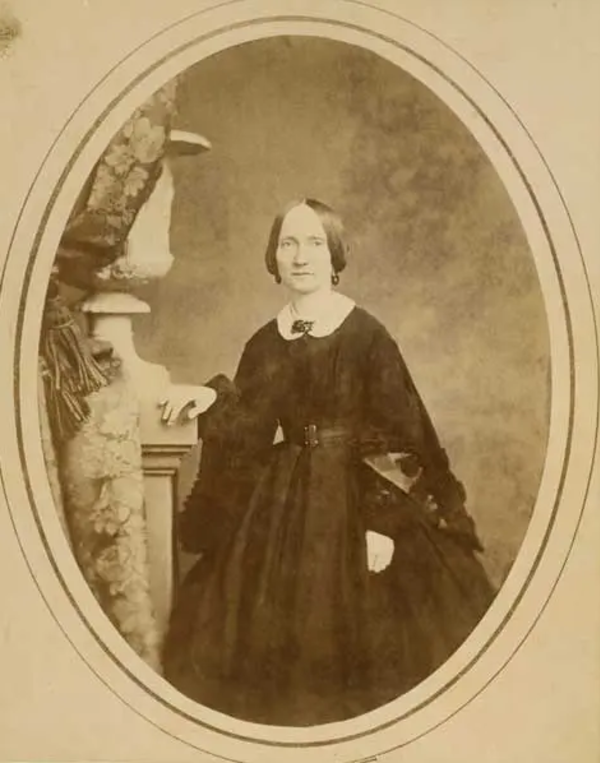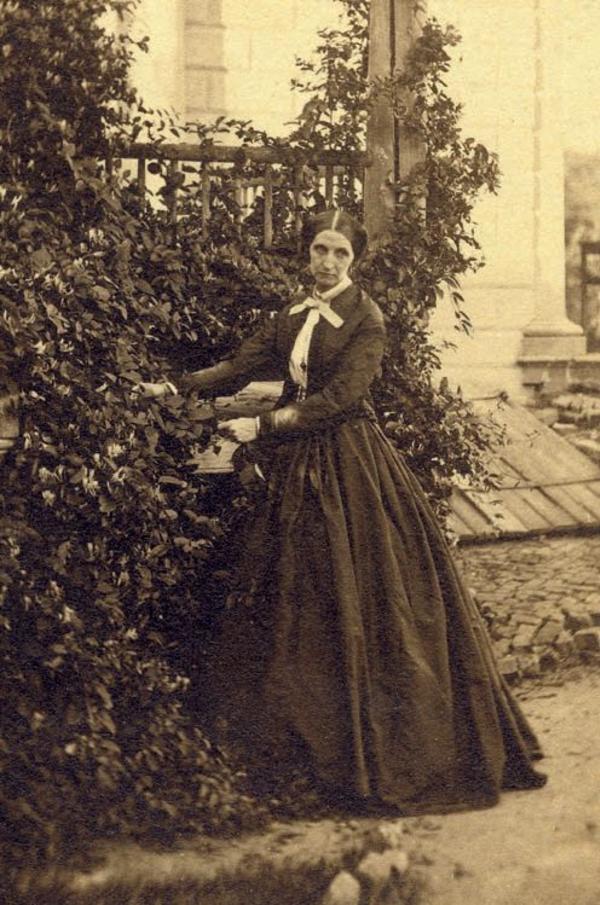One of the most treasured historic estates in America (and possibly the world) is George Washington's Mount Vernon. Given the popularity and reverence of POTUS 1 back in the day, one could easily assume that plans would have been in place to ensure the protection and preservation of his beloved estate. Yet, years after his passing, his home had been left in severe disrepair and was on the verge of permanent collapse.
Aghast at the prospect of losing such a valuable asset to United States history, some very special, forward-thinking ladies stepped up in a big way to ensure this wouldn't happen. If not for them, we may very well not know what we know about George Washington today - and definitely wouldn't be able to visit and explore the incredible grounds his estate rests on in southern Fairfax County.
This is the story of two of the inspiring women that helped save Mount Vernon.
Ann Pamela Cunningham

Ann Pamela Cunningham - Courtesy Mount Vernon Ladies' Association / MountVernon.org
Self-determined woman. Cunning fundraiser. Founder of the Mount Vernon Ladies' Association (MVLA). Trailblazing philanthropist. South Carolinian Ann Pamela Cunningham was all that and then some, and it all started with a letter from her mother. Upon sailing home to South Carolina, Ann Pamela's mother caught a glimpse of Mount Vernon from her ship as she passed by the failing estate on the banks of the Potomac River. She wrote to her daughter: "I was painfully distressed at the ruin and desolation of the home of Washington and the thought passed through my mind: Why was it that the women of his country did not try to keep it in repair if the men could not do it? It does seem such a blot on our country!"
Inspired by her mother's observation, Ann Pamela set forth on a mission to buy, restore, and ultimately save Mount Vernon.
The Mount Vernon Ladies' Association

Ann Pamela Cunningham with the Mount Vernon Ladies Association in 1873 - Courtesy Mount Vernon Ladies' Association / MountVernon.org
She quickly got to work, organizing nationwide fundraising efforts and inviting influential women from each state in America (just 30 at the time) to serve as Vice-Regents of a new organization, which ultimately became the Mount Vernon Ladies' Association.
Eventually, the MVLA convinced John Augustine Washington III (the great-grandnephew of George Washington and the last private owner of Mount Vernon) to arrange a sale of the estate and 200 acres for $200,000 in 1858. Washington III had previously tried to sell the estate to both the Commonwealth of Virginia and the United States Government, but when those plans failed he decided the MVLA was the best alternative and wrote: "Under the circumstances, and believing that after the two highest powers in the country, the women of the land will probably be the safest, as they will certainly be the purest, guardians of a national shrine, I am willing so far to comply with your request."
Cunningham resigned from her position as Regent of the MVLA in 1874 and returned home to South Carolina. She passed away a year later. Her legacy will always be remembered as one that created the first national historic preservation organization and the oldest women's patriotic society in the United States.
Sarah Tracy

Sarah Tracy - Courtesy George Washington's Mount Vernon
The MVLA took over the estate in 1860 when the country found itself on the precipice of Civil War. Ann Pamela Cunningham had to return home to South Carolina due to the death of her father and when war broke out, she found herself in a position where travel was difficult or nearly impossible. In stepped Sarah Tracy, Cunningham's secretary and the first secretary of the MVLA. Tracy, along with the estate's first Superintendent Upton Herbert, had the tall task of managing the estate throughout the entire duration of the Civil War (1861-1865). During this time, there were also a number of free African American women employees at the estate that contributed mightily to its survival and day-to-day operations.
The Civil War Years
 Mansion, South East View (London Stereoscopic Co., Copyright 1859-1860) / courtesy MountVernon.org
Mansion, South East View (London Stereoscopic Co., Copyright 1859-1860) / courtesy MountVernon.org
Ann Pamela Cunningham believed that it would be crucial to keep Mount Vernon free from conflict during the war and was adamant that the estate remain neutral ground during the conflict. Southern soldiers regarded Washington as a native son of Virginia, whose legislature just voted to secede from the United States. Northern soldiers regarded Washington as the father of the country they were willing to sacrifice their lives to reunite and preserve. Because of this, both sides revered Mount Vernon and had the utmost respect for the legacy of George Washington.
After their occupation of nearby Alexandria in May of 1861, Federal troops tried to reclaim the funds paid to John Augustine Washington III by the Mount Vernon Ladies' Association. Washington III had enlisted in the Confederate Army since the sale and the money was considered contraband. When the troops searched the bank where the funds were originally deposited, they found nothing. They searched the bank owner's home and again came up empty. Little did they know, the bank owner had carefully concealed the money in his home. He summoned Sarah Tracy to do a "great favor for the Washington family." Tracy secured and hid the money in a basket of eggs, successfully navigated through Union army lines into Washington, D.C. and redeposited the money into the Riggs Bank. This money would be held for the Washington family, to ensure they had full payment for the estate and so that the MVLA could maintain legal ownership.
Tracy also collected admission from soldiers to access the estate to pay tribute to George Washington during the war. The cost of admission was 25 cents, although some of the soldiers couldn't (or wouldn't) pay the fee.
Throughout the history of Mount Vernon, many different women have been at the forefront of making the estate what it was and what it is today. If it were not for them, the estate would not exist as it does today for the public to enjoy and learn from.
Even today, Mount Vernon is still owned and maintained in trust for the people of the United States by the Mount Vernon Ladies' Association, a private, non-profit organization. They do not accept government funding and they rely upon private contributions to help preserve George Washington's home and legacy.
To learn more about female visionaries and women's history in #FXVA, visit our HERstory page. Or on our blog, you can read about the revolutionary suffragists incarcerated at the nearby Workhouse Arts Center, how one woman's commitment to environmental preservation resulted in the first national refuge for the Bald Eagle, and how one woman's vision for a cultural oasis resulted in one of the region's most beloved venues.
Join the conversation on social using @VisitFairfax and #FXVA.







